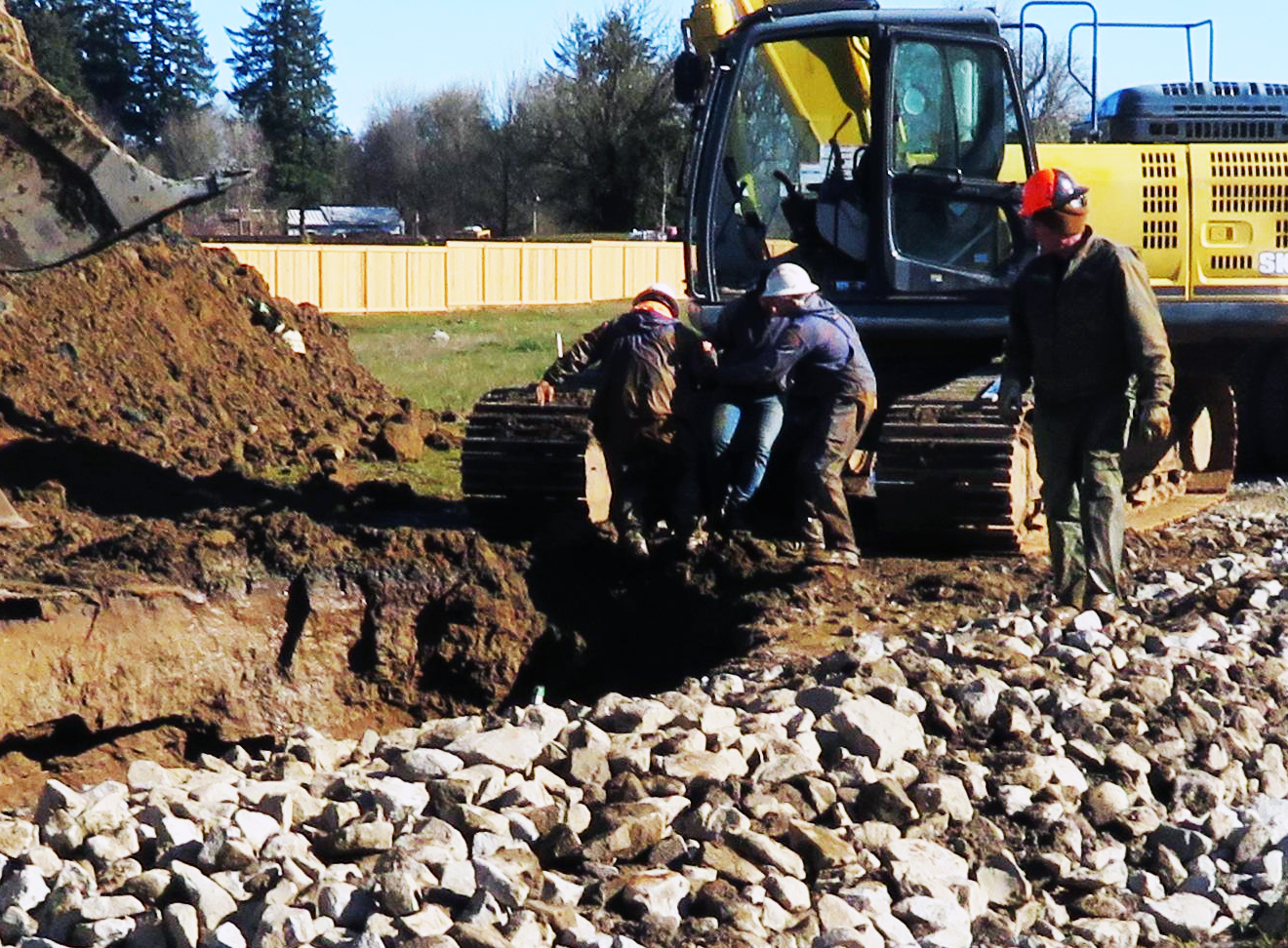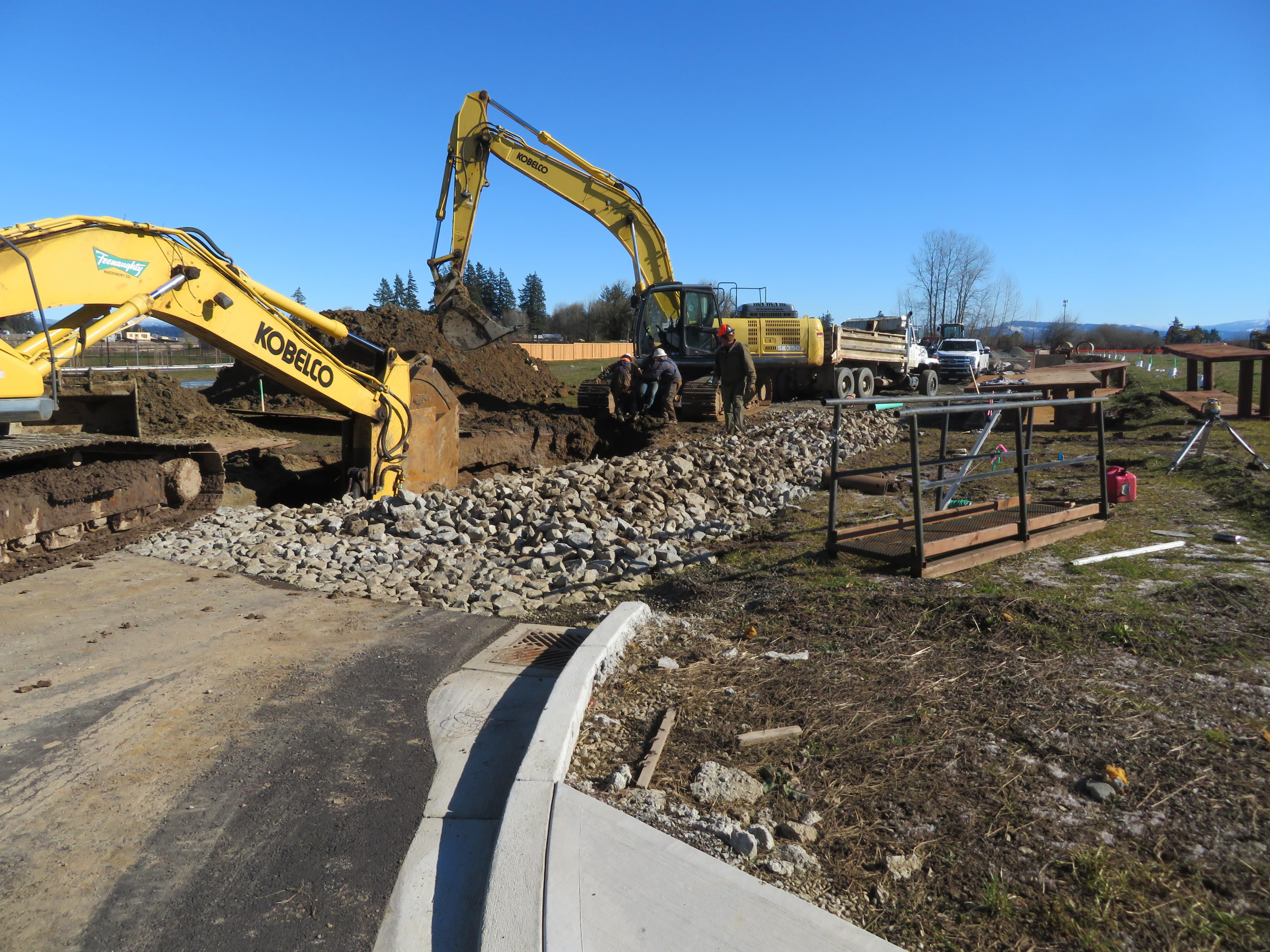L&I inspector takes quick action to stop a trench from caving in on workers
Clark County excavating company fined $140,500 for knowingly putting workers in danger
TUMWATER — Safety violations that put workers at serious risk have resulted in numerous citations and a major fine for a Vancouver, Wash. excavating company.
Washington Labor & Industries (L&I) inspector Tyler Barrick was driving by a new construction site in Ridgefield earlier this year when he saw an excavator digging. L&I is part of a national push to increase trench safety on job sites. As part of that effort, any time an inspector sees a worksite where trenching or digging is happening, they stop to conduct an inspection.
As Barrick approached the work site, he photographed Clark County Excavating & General Contracting employees pulling co-workers out of a 12-foot-deep trench where they were installing a new sewer line. They had to pull them out by hand because the ladder in place to get in and out of the trench was far too short to reach the top.
Additionally, the company had a trench box in the trench, but it was much too small for the job. Because it did not reach the sides of the trench, it left room for the walls to collapse around it, creating a hazard for workers in the box and working near the edges of the trench.
As L&I’s inspector Barrick watched from the site, the trench walls crumbled and fell in repeatedly. Barrick took action—stopping work on the site until the hazards had been corrected and clearing workers away from the edges of the trench.
During the inspection, Barrick witnessed the trench wall collapse an estimated 20 times. The trench was initially about six feet wide, but it collapsed to a width of about 15 feet. So much dirt sloughed off that the trench box was starting to lean over from the weight of the soil and steel plating near the existing sewer line was starting to bow and bend.
Workers told Barrick they could hear the collapsing dirt hit the side of the trench box while they were inside during setup.
“All of the necessary safety equipment was on site; it just wasn’t used. If our inspector had not come along, this could have easily ended in tragedy,” said Craig Blackwood, assistant director for L&I’s Division of Occupational Safety and Health. “This employer has owned and operated this excavation company for 35 years: He knows the rules.”
Watch the video showing what Barrick photographed and how his actions may have saved a life.
Digging into Clark County Excavating’s safety record
L&I’s Verify a Contractor tool shows Clark County Excavating has a history of not following safety rules. Over the past three years, the company has been inspected twice, resulting in seven serious violations related to trenching hazards and inadequate traffic control.
The current inspection resulted in five willful serious violations carrying a $140,500 fine. The company did not protect workers from cave-ins while working in, entering, or exiting the trench; they did not remove workers from the trench when it showed signs of collapsing; there was no walkway/ramp to cross over the trench; and the ladder was not extended at least three feet above the upper landing.
Enforcement is working to prevent trenching deaths
Since January 2023, L&I has conducted more than 465 inspections of trenching and excavation sites, citing nearly 400 employers for health and safety violations. There have been no trenching deaths in Washington over the past three years.
“We launched our focus on trench safety to spot hazards before a worker gets hurt, and to raise awareness about the hazards of this kind of work,” said Blackwood.
The full citation, including a breakdown of the fines, is available online. Clark County Excavating is appealing L&I’s decision.
Dina Lorraine, L&I Public Affairs, 360-972-4868.


Communication Services | www.Lni.wa.gov/news-events
See the latest L&I news releases